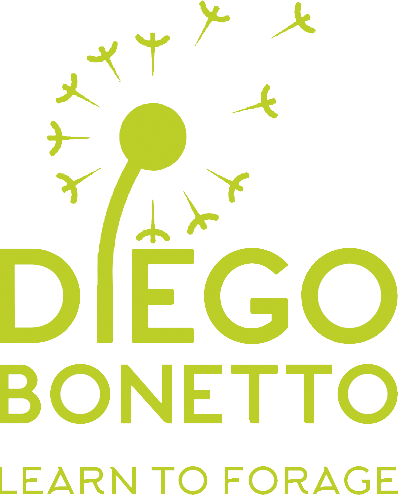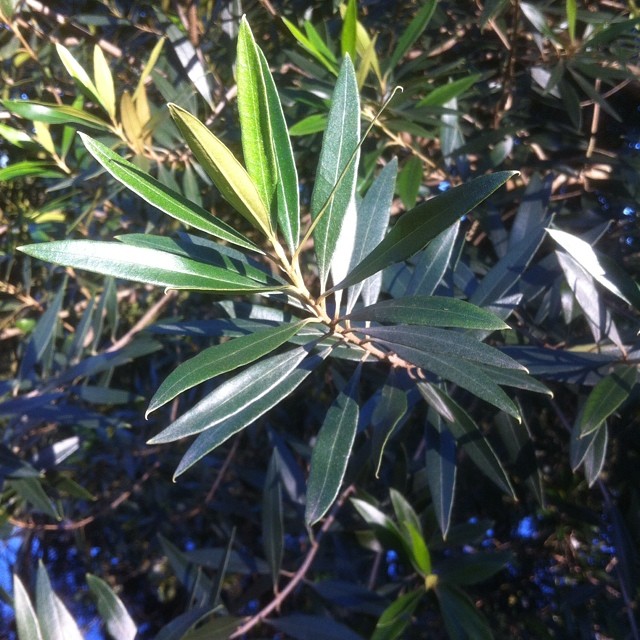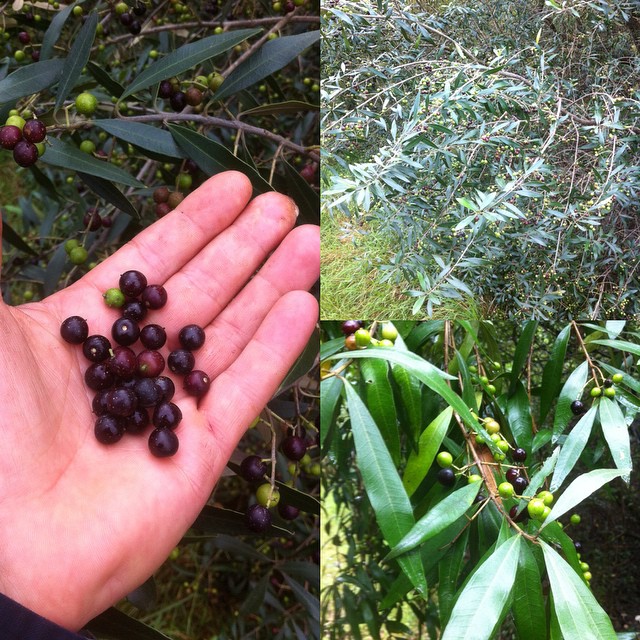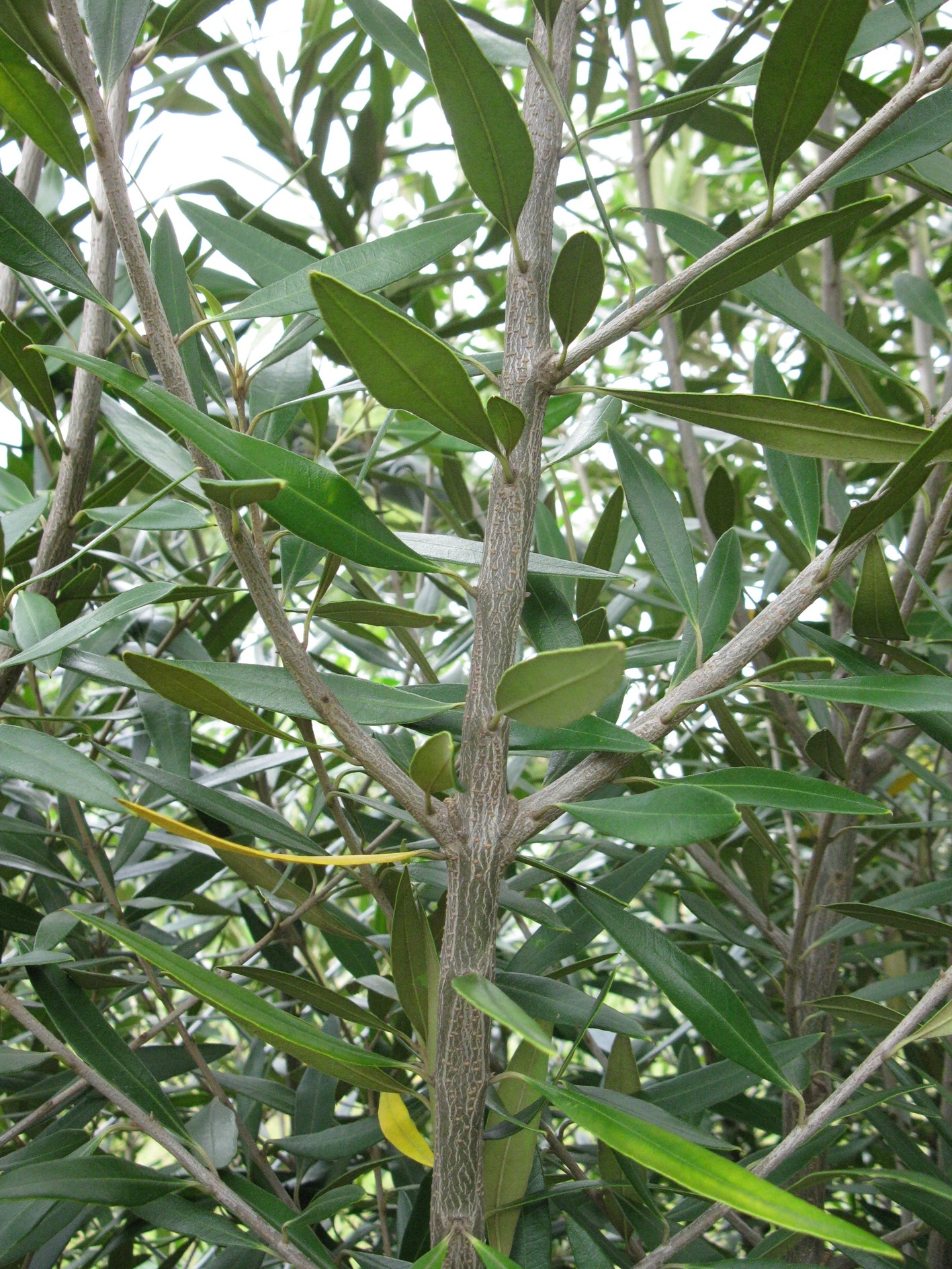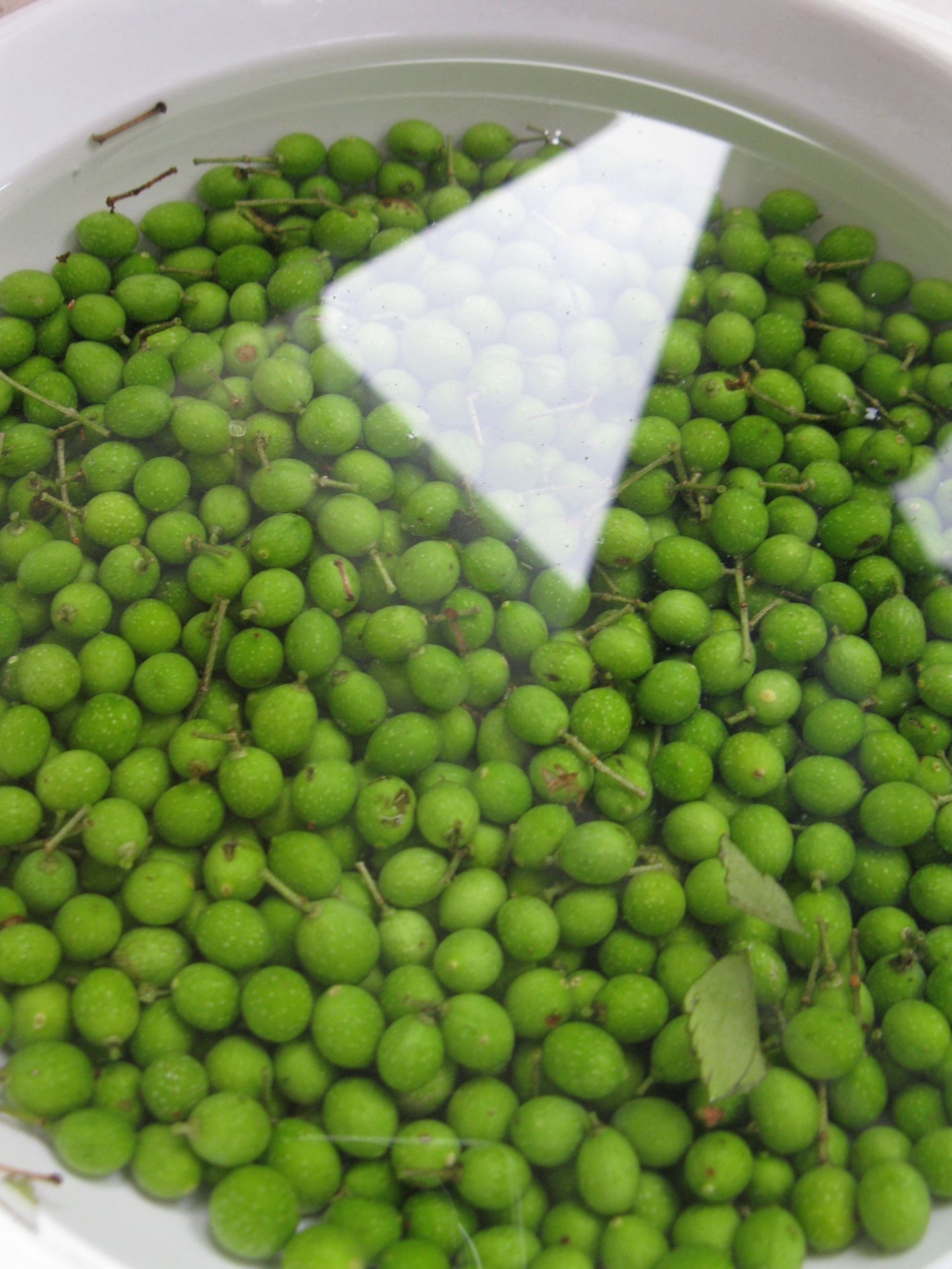In season now: african olives
On this article we talk about a serious weed of greater Sydney, as in Noxious weed. One of those plants that the government and land manager spend millions in trying to contain in NSW alone: African olives -olea europeae subspecies cuspidata-
This small tree -up to 10 meters tall- was first introduced to Australia back in early 1800s, as a fast growing, much branching, little effort edge plant. Boy it went wild.
It now covers extensive areas of the Sydney area and is declared as a priority species to be controlled in both government and private land.
This is also a delicious plant, closely related to the commercial olive (indeed a subspecies) it carries the same characteristics and medicinal benefit. Olive fruits are widely used, especially in the Mediterranean, as a relish and flavouring for foods. The fruit is usually pickled or cured with water, brine, oil, salt or lye. They can also be dried in the sun and eaten without curing. The cured fruits are eaten as a relish, or used in breads, soups, salads etc. ‘Olives schiacciate’ are olives picked green, crushed, cured in oil and used as a salad. The fruit contains 20 – 50µ vitamin D per 100g.
The main issue here is size, this trees were never bread for big fruits, indeed, this is a wild tree. Yet the seed is rich in an edible non-drying oil, that is used in salads and cooking and, because of its distinct flavour, is considered a condiment. There are various grades of the oil, the finest (known as ‘Extra Virgin’) is produced by cold pressing the seeds without using heat or chemical solvents. Other grades of the oil come from seeds that are heated (which enables more oil to be expressed but has a deleterious effect on the quality) or from using chemical solvents on seed that has already been pressed for higher grades of oil. Olive oil is mono-unsaturated and regular consumption is thought to reduce the risk of circulatory diseases. The seed contains albumen, it is the only seed known to do this and an edible manna is obtained from the tree.
One on the best uses I heard from a while is by Trolley'd a local mobile bar, who harvest the fruit to make a tincture for dirty martinis, now that's a good way to deal with the spread.
I think the biggest missed opportunity here is in the foliage though, as olive leaves extract is a much priced immune system booster. The leaves are antiseptic, astringent, febrifuge and sedative. A decoction is used in treating obstinate fevers, they also have a tranquillising effect on nervous tension and hypertension. Experimentally, they have been shown to decrease blood sugar levels by 17 – 23%. Externally, they are applied to abrasions. The bark is astringent, bitter and febrifuge. It is said to be a substitute for quinine in the treatment of malaria. In warm countries the bark exudes a gum-like substance that has been used as a vulnerary (a medicine used in the healing of wounds).
More? Talk to any wood turner and they will tell you how much they'd like to put their hands on some good sized piece of African Olive timber, as it is very hard, heavy, beautifully grained, takes a fine polish and is slightly fragrant.
TIP: a distinctive feature of the plant is in the leaf. The very tip of it has a tiny 'hook'. Get hooked on the olives I say. I'm sure there's a marketing campaign right there.
So, when are we starting to turn a problem into a possible economic wonder? We have african olives coming out of our ears after all, let's harvest, rather than destroy.
Check out Wild Food Map for locations of some. Try the little black olives now in season and juicy, you'll be surprised :)
